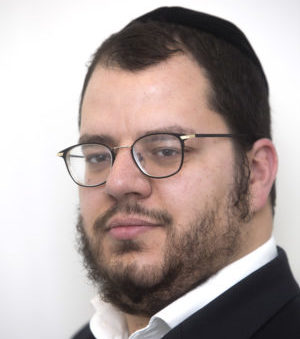A Singular Foundation


Rebbe Mordechai Hager of Vizhnitz-Monsey built his chassidus with the sheer force of his own exalted presence, uncompromising values, and personal example

Photos: Yossi Goldberger, Avraham Sorkis Archives, Amir Levy
W
hen you look at the sprawling Vizhnitzer beis medrash in Monsey, hub of a glorious kehillah, you’ll likely be impressed. It’s a chassidus with satellite communities all over the world — Brooklyn and Kiamesha, London, Montreal, and Eretz Yisrael — and it encompasses respected yeshivos and quality avreichim and families.
It’s even more remarkable for those who were privileged to know the Rebbe, Rav Mordechai Hager ztz”l, who was niftar on Erev Shabbos after a long illness. The Rebbe, a scion of the Vizhnitzer Rebbes of Europe, built this empire on American soil without the usual tools of leadership. You looked at the tzaddik of Monsey and you saw a saintly figure who was clearly bound up with Heaven, immersed in his own thoughts. He wasn’t a rebbe who offered motivational derashos and an acute understanding of business. The rebbe built up a chassidus with the sheer force of his own exalted presence and uncompromising values. Like an experienced contractor, he built by knowing what he expected, what he wanted, and how to achieve it.
He started with so little, Monsey old-timers remember. When he emerged from the ashes and began building a chassidus in America, all he had was a handful of survivors who’d lost their yeshivah years while trying to survive, now overwhelmed with the demands of trying to make a living and getting by in this new world of the United States. The Rebbe made it clear, early on, that there’s only one way to build: Torah.
“Don’t bring me kvittlach,” the Monsey-Vizhnitz Rebbe cried. “Bring me sha’os tzetlach,” the papers upon which the Rebbe expected every chassid to write how much they were learning each week, and with whom.
He built a chassidus not by saying, but by doing. The strongest imperative and most enduring lesson to his chassidim was his personal example. The children and grandchildren of those first chassidim understood that a chassid has an open Gemara before him at all times.
The Rebbe was famous for his tremendous diligence in learning. Between petitioners, he would snatch any available moment to learn a few more lines of Gemara, another mishnah. He was mesader kiddushin for every chasunah in his court — the chuppahs took place just outside his home — but only between chavrusos. There was a 20-minute window in which he would come out, officiate, bless the new couple, and then return to his room and his seforim.
This past Elul, a follower of a different chassidus brought his son to the Rebbe for a brachah. After he was escorted in to the Rebbe, he put down a wad of money and said, “Rebbe, I have 18,000 dollars here.” The Rebbe did not react.
Then the man said, “And this is my son, who just completed Shishah Sidrei Mishnah.” The Rebbe’s face lit up and he embraced the bochur. Those Mishnayos, the spiritual achievements, were the currency of his heart.
Oops! We could not locate your form.












